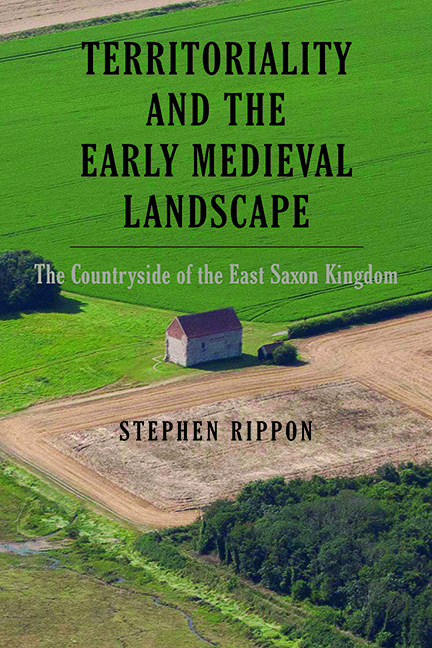Book contents
- Frontmatter
- Dedication
- Contents
- List of Illustrations
- List of tables
- List of Abbreviations
- Acknowledgements
- Glossary
- Preface
- Part I Background
- Part II The Early Folk Territories
- Part III Discussion and Analysis
- Appendix 1 Domesday Population Densities Across the ‘Rochford Peninsula’ Early Folk Territory
- Appendix 2 Sites Used in the Analysis of Animal Bone Assemblages
- Appendix 3 Sites Used in the Analysis of Charred Cereal Assemblages
- Bibliography
- Index
- Garden and Landscape History
Chapter 6 - The Province of the Middle Saxons
Published online by Cambridge University Press: 26 May 2022
- Frontmatter
- Dedication
- Contents
- List of Illustrations
- List of tables
- List of Abbreviations
- Acknowledgements
- Glossary
- Preface
- Part I Background
- Part II The Early Folk Territories
- Part III Discussion and Analysis
- Appendix 1 Domesday Population Densities Across the ‘Rochford Peninsula’ Early Folk Territory
- Appendix 2 Sites Used in the Analysis of Animal Bone Assemblages
- Appendix 3 Sites Used in the Analysis of Charred Cereal Assemblages
- Bibliography
- Index
- Garden and Landscape History
Summary
THE ‘PROVINCE OF THE Middle Saxons’ is referred to in several eighth-century charters at a time when the western part of the East Saxon kingdom was starting to fall under Mercian supremacy (Dumville 1989, 134; Taylor 2017, 60–1). This ‘province’ was the predecessor of the later county of Middlesex which – before its northern boundary was complicated by the transference of Chipping Barnett and Totteridge to Hertfordshire – formed a compact district defined by major natural features: the Thames to the south, the Colne to the west, the high ground of Harrow Weald and Enfield Chase to the north and the watershed of the river Lea to the east. There was a marked two-fold division in its geology, soils and topography. To the south there are extensive deposits of sandy gravel (large areas of which were unenclosed heathland as late as the eightheenth century) and more fertile brickearth, while to the north heavy London Clay rises up to the gravel-capped hills of Harrow Weald and Enfield Chase on the Hertfordshire border. The Domesday data for Middlesex reflects these soils, with the highest densities of both population and plough-teams on the lighter soils in the south and low densities across the heavy claylands to the north, which had large amounts of woodland (Figure 1.5; Campbell 1962b).
THE DEVELOPMENT OF LONDON
The Roman town of London appears to have been virtually deserted in the fifth and sixth centuries (Cowie 2008), but in 601 Pope Gregory wrote to Archbishop Augustine to express his wish that London and York should become the primary sees in Britain (HE I.29), presumably because of their importance as provincial capitals in the Late Roman period. By the late seventh century the Laws of Hlothhere and Eadric refer to the ‘king's hall’ at London (Whitelock 1955, 360–1), although whether there had been a royal vill there at the start of the seventh century is unclear. Augustine, however, chose to remain at Canterbury under the protection of his patron King Æthelberht of Kent and instead appointed Mellitus (604–c.616) as bishop of the East Saxons, whose chief city was described as London.
- Type
- Chapter
- Information
- Territoriality and the Early Medieval LandscapeThe Countryside of the East Saxon Kingdom, pp. 129 - 144Publisher: Boydell & BrewerPrint publication year: 2022



